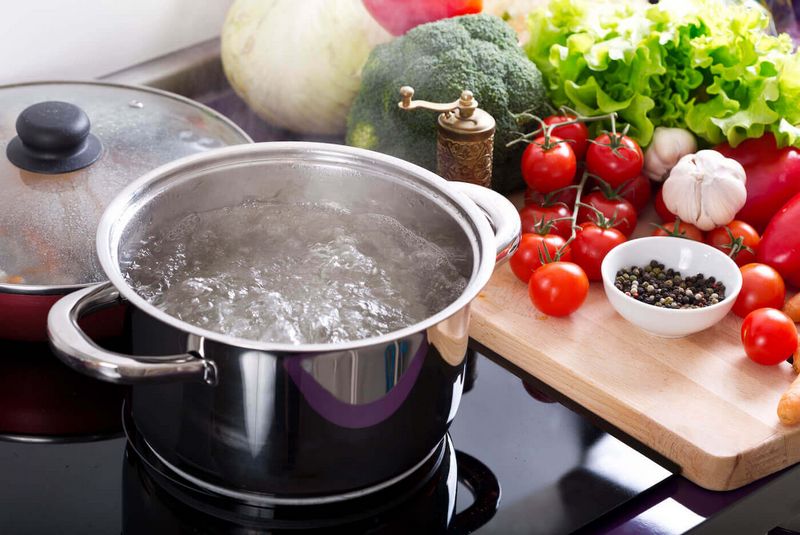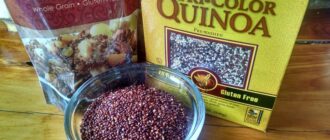
Understanding Heat in Cooking: The Journey from Simmering to Boiling
Cooking is a fascinating process that involves the application of heat to transform raw ingredients into delicious meals. Heat plays a crucial role in this transformation, as it has the power to change the texture, flavor, and chemical composition of food. Understanding the different levels of heat, from simmering to boiling, is essential for achieving the desired results in cooking.
Simmering is a gentle cooking technique that involves heating a liquid to a temperature just below its boiling point. This low and steady heat allows flavors to meld together and ingredients to become tender. Simmering is commonly used for making soups, stews, and sauces, as it helps to extract flavors from ingredients and create a rich and complex taste.
On the other hand, boiling is a more intense cooking method where a liquid reaches its boiling point, causing it to rapidly bubble and release steam. Boiling is often employed for cooking pasta, vegetables, and grains, as it quickly softens and cooks these ingredients. It is important to note that boiling can also cause some loss of nutrients, so it is recommended to cook vegetables for a shorter period of time to retain their nutritional value.
By understanding the different levels of heat in cooking, chefs and home cooks alike can master the art of creating delicious and well-cooked meals. Whether it’s simmering a flavorful broth or boiling vegetables to perfection, heat is a fundamental element that should be harnessed and controlled to achieve culinary success.
The Science Behind Heat in Cooking
Understanding the science behind heat in cooking is crucial for achieving the desired results in the kitchen. Heat plays a fundamental role in transforming raw ingredients into delicious meals, and knowing how to control and utilize heat effectively can make all the difference in the outcome of a dish.
When it comes to cooking, heat is responsible for a variety of chemical reactions that occur in food. One of the most well-known reactions is boiling, which happens when a liquid reaches its boiling point and turns into vapor. Boiling is often used to cook pasta, vegetables, and other ingredients that require a quick and thorough cooking process.
Heat also affects the texture and taste of food. For example, when proteins are heated, they undergo a process called denaturation, which causes them to unfold and coagulate. This is what gives cooked meat its firm texture and changes its flavor. Additionally, heat can break down complex carbohydrates into simpler sugars, resulting in a sweeter taste.
Controlling heat is essential in cooking to ensure that food is cooked evenly and thoroughly. Different cooking methods, such as baking, frying, and grilling, require specific temperature ranges to achieve the desired outcome. Understanding the science behind heat allows cooks to make precise adjustments and create dishes that are perfectly cooked.
In conclusion, heat is a vital component in cooking, and understanding its effects on food is key to becoming a skilled cook. By grasping the science behind heat, cooks can confidently experiment with different techniques and ingredients, ultimately creating delicious meals that are both visually appealing and full of flavor.
Heat Transfer Methods in Cooking
In cooking, heat is a crucial element that transforms raw ingredients into delicious meals. There are several methods of heat transfer used in cooking, each with its own effect on the ingredients and the final dish.
One common method of heat transfer in cooking is boiling. Boiling involves heating a liquid, such as water or broth, to its boiling point. This method allows for even heat distribution throughout the liquid, ensuring that all ingredients are cooked evenly. Boiling is often used for cooking pasta, boiling vegetables, or making soups and stews.
Simmering is another heat transfer method commonly used in cooking. Simmering involves heating a liquid to a lower temperature than boiling, typically around 180-200°F (82-93°C). This gentle heat allows flavors to meld together and ingredients to become tender without overcooking. Simmering is often used for making sauces, braising meats, or slow-cooking dishes.
Another heat transfer method used in cooking is conduction. Conduction involves direct contact between a heat source, such as a stove burner or a pan, and the food being cooked. The heat from the source is transferred to the food, cooking it evenly. This method is commonly used for searing meats, sautéing vegetables, or frying foods.
Convection is another important heat transfer method in cooking. Convection involves the circulation of hot air or liquid around the food being cooked. This method allows for faster and more even cooking, as the heat is distributed evenly throughout the cooking environment. Convection ovens and deep fryers are examples of cooking appliances that use convection for heat transfer.
Understanding the different heat transfer methods in cooking is essential for achieving the desired results in your dishes. Whether you’re boiling, simmering, or using conduction or convection, each method brings its own unique qualities to the cooking process, resulting in delicious and well-cooked meals.
The Role of Temperature in Cooking
Understanding the role of temperature is crucial in cooking, as it directly affects the outcome of the dish being prepared. Different cooking techniques require different levels of heat, and temperature control is essential to achieve the desired results.
Boiling is a cooking method that involves heating a liquid to its boiling point, usually 100 degrees Celsius (212 degrees Fahrenheit). This high temperature causes the liquid to bubble vigorously, and it is commonly used for cooking pasta, boiling vegetables, or making soups and stews. Boiling helps to soften the ingredients and infuse flavors into the dish.
Simmering, on the other hand, is a gentler cooking technique that involves heating a liquid to a temperature just below its boiling point, typically around 85-95 degrees Celsius (185-203 degrees Fahrenheit). This lower temperature allows the flavors to meld together slowly and gently, making it ideal for simmering sauces, braising meats, or cooking delicate proteins like fish or eggs.
Heat is a vital component in cooking, as it is responsible for transforming raw ingredients into delicious meals. It helps to break down proteins, release flavors from spices and herbs, and create the desired texture and consistency in the final dish. Understanding how to control and manipulate heat is key to achieving culinary success.
Understanding Simmering and Boiling
Simmering and boiling are two common cooking techniques that involve the application of heat. Both methods are used to cook food, but they differ in terms of temperature and intensity.
Simmering is a gentle cooking method that involves heating food at a low temperature. It is typically done over a low flame or heat setting. Simmering allows flavors to meld together and allows for the gradual breakdown of proteins in meats, resulting in tender and flavorful dishes. It is commonly used for soups, stews, and sauces.
Boiling, on the other hand, involves heating food at a higher temperature. It is done by bringing a liquid to its boiling point, where it begins to bubble and rapidly evaporate. Boiling is a more intense cooking method and is often used for pasta, vegetables, and certain meats. It helps to soften and cook food quickly.
Both simmering and boiling are important techniques in cooking, and understanding the differences between them can help you achieve the desired results in your dishes. Whether you’re simmering a savory sauce or boiling pasta for a quick meal, the application of heat plays a crucial role in the cooking process.
The Effect of Heat on Food Texture
Understanding the impact of heat on food texture is crucial in the art of cooking. Whether you are simmering or boiling, the way heat interacts with different ingredients can drastically change the texture of the final dish.
When ingredients are simmered, the gentle heat slowly breaks down the fibers in food, resulting in a tender and soft texture. This is particularly noticeable in meats, where simmering can transform tough cuts into succulent and melt-in-your-mouth delicacies. Simmering is also commonly used to cook grains and legumes, allowing them to soften and become more palatable.
On the other hand, boiling introduces a more intense and rapid heat that can significantly alter the texture of certain foods. Vegetables, for example, can quickly go from crisp and crunchy to mushy when boiled for too long. This is because the heat breaks down the cell walls, causing them to lose their structure and become soft. Boiling is also commonly used for pasta, which transforms from hard and dry to tender and al dente.
It is important to understand the desired texture for each ingredient and adjust the cooking method accordingly. For example, if you prefer your vegetables to have a slight crunch, it is best to lightly steam or sauté them instead of boiling. Similarly, if you want your meat to be tender and juicy, simmering it slowly over low heat is the way to go.
In summary, heat plays a crucial role in determining the texture of food during cooking. Whether simmering or boiling, understanding how heat interacts with different ingredients allows you to achieve the desired texture and enhance the overall culinary experience.
Cooking with Different Heat Sources
Understanding how to cook with different heat sources is essential for achieving the desired results in your culinary endeavors. Simmering and boiling are two common techniques that rely on the application of heat to cook food.
Simmering: Simmering refers to cooking food in liquid at a temperature just below the boiling point. This gentle heat allows flavors to meld together and infuse the dish. Common examples of simmered dishes include soups, stews, and sauces. To simmer food, you can use various heat sources such as a stovetop burner, a slow cooker, or an oven.
Boiling: Boiling, on the other hand, involves cooking food in a liquid at its boiling point, which is typically 100 degrees Celsius (212 degrees Fahrenheit) at sea level. This high heat causes rapid bubbling and agitates the food, making it cook faster. Boiling is commonly used for cooking pasta, vegetables, and eggs. Heat sources like a stovetop burner or an electric kettle are often used for boiling.
It’s important to note that different heat sources can affect the cooking process and results. For instance, gas burners provide instant heat control and are ideal for simmering delicate foods. Electric stovetops, on the other hand, may have a slower response time, requiring adjustments to achieve the desired simmer. Understanding the characteristics of your heat source will help you adjust cooking times and temperatures accordingly.
When cooking with heat, it’s crucial to monitor the temperature and make adjustments as needed. Using a thermometer or visually observing the liquid’s behavior can help determine if the heat source is too high or too low. Additionally, using a lid can help trap heat, speeding up the cooking process or keeping the dish at a simmer.
In conclusion, understanding how to cook with different heat sources is key to mastering simmering and boiling techniques. By knowing the characteristics of your heat source and making necessary adjustments, you can achieve delicious and well-cooked dishes every time.
The Importance of Preheating
Preheating is an essential step in cooking that is often overlooked or rushed. It involves heating the cooking equipment, such as a pan or oven, to the desired temperature before adding the food. Preheating is crucial for several reasons.
1. Even Cooking: Preheating ensures that the heat is distributed evenly throughout the cooking surface. This is particularly important when using a stovetop or oven, as it allows the food to cook consistently and prevents hot spots.
2. Time Efficiency: Preheating reduces the overall cooking time. When the cooking equipment is already hot, the food can start cooking immediately, resulting in faster and more efficient cooking.
3. Food Safety: Preheating helps kill bacteria and other harmful microorganisms that may be present in the cooking equipment. This is especially important when cooking meat and poultry, as it ensures that the food reaches a safe internal temperature.
4. Texture and Flavor: Preheating contributes to the desired texture and flavor of the food. For example, preheating a pan before searing meat helps to create a crispy exterior while keeping the interior juicy and tender.
5. Cooking Accuracy: Preheating allows for more accurate cooking temperatures. By preheating, you can ensure that the cooking equipment reaches the desired temperature as indicated in the recipe, resulting in more precise cooking results.
Overall, preheating is a crucial step in cooking that should not be overlooked. It helps to ensure even cooking, saves time, promotes food safety, enhances texture and flavor, and allows for more accurate cooking. So, next time you’re in the kitchen, remember to preheat your cooking equipment for optimal cooking results.
Cooking Techniques for Slow Cooked Dishes
Understanding different cooking techniques is essential for creating delicious slow-cooked dishes. Slow cooking is a method that involves cooking food at a low temperature over a long period of time. This allows the flavors to develop and the ingredients to become tender and juicy.
One of the most common techniques for slow cooking is simmering. Simmering involves cooking food in liquid at a temperature just below boiling. This gentle heat allows the flavors to meld together and the proteins in the meat to break down, resulting in tender and flavorful dishes.
Another technique for slow cooking is braising. Braising involves browning the food in a hot pan and then cooking it slowly in a liquid. This technique is often used for tough cuts of meat, as the slow cooking process helps to tenderize the meat and infuse it with flavor.
Heat is an important factor in slow cooking. The low and slow method allows the food to cook evenly and prevents it from becoming tough or dry. It’s important to maintain a consistent temperature throughout the cooking process to ensure the best results.
Overall, understanding and mastering different cooking techniques for slow-cooked dishes is key to creating flavorful and tender meals. Whether you’re simmering, braising, or using another method, the slow cooking process allows the flavors to develop and the ingredients to shine.
The Chemistry of Maillard Reaction
The Maillard reaction is a chemical reaction that occurs when cooking food at high temperatures. It is responsible for the browning and flavor development of many cooked foods, including bread, meat, and roasted vegetables. Understanding the chemistry behind the Maillard reaction is crucial for achieving the desired flavors and textures in cooking.
Heat plays a crucial role in the Maillard reaction. When food is heated, the amino acids and sugars present in the food undergo a series of complex chemical reactions. This reaction is accelerated at higher temperatures, such as boiling or frying, where the heat provides the energy needed for the reaction to occur.
During the Maillard reaction, the amino acids and sugars react to form new compounds known as melanoidins. These compounds give cooked food its characteristic brown color and rich flavor. The Maillard reaction also produces a variety of volatile compounds that contribute to the aroma and taste of cooked food.
Understanding the Maillard reaction can help cooks enhance the flavors of their dishes. By controlling the temperature and cooking time, cooks can manipulate the Maillard reaction to achieve different levels of browning and flavor development. For example, a longer cooking time at a lower temperature will result in a milder flavor, while a shorter cooking time at a higher temperature will produce a more intense flavor and darker color.
In conclusion, the Maillard reaction is a fundamental chemical process in cooking that is responsible for the browning and flavor development of cooked food. Heat plays a crucial role in this reaction, and understanding how to manipulate the temperature and cooking time can help cooks achieve the desired flavors and textures in their dishes.
Achieving the Perfect Sear
When it comes to cooking, understanding heat is essential. One technique that can elevate the flavor and appearance of your dishes is achieving the perfect sear. Searing involves cooking food at high temperatures to create a caramelized crust on the surface, which enhances the taste and texture.
To achieve the perfect sear, it’s important to start with a hot pan. Heat the pan over medium-high heat until it’s hot but not smoking. This allows the heat to evenly distribute and ensures a nice sear. You can test the temperature by sprinkling a few drops of water onto the pan – if they sizzle and evaporate quickly, it’s ready to use.
Another key factor in achieving a great sear is to dry the surface of the food before adding it to the pan. Moisture on the surface can prevent proper browning and result in a less desirable texture. Use a paper towel to pat the food dry, especially if it has been marinated or seasoned.
When searing meat, it’s important to let it cook undisturbed for a few minutes on each side. This allows the Maillard reaction to occur, which is responsible for the delicious caramelization and flavor development. Avoid overcrowding the pan, as this can cause the temperature to drop and result in steaming rather than searing.
Remember that searing is not limited to just meat – vegetables can also benefit from this technique. Searing vegetables can enhance their natural sweetness and add depth of flavor. Be sure to cut them into even-sized pieces to ensure even cooking and use a high-heat oil such as avocado or grapeseed oil.
Overall, achieving the perfect sear requires a combination of understanding heat, using the right techniques, and paying attention to detail. With practice, you’ll be able to create beautifully seared dishes that are bursting with flavor and visual appeal.
The Art of Braising and Stewing
Braising and stewing are two cooking techniques that involve slow cooking food in liquid over low heat. Both methods are ideal for tougher cuts of meat, as the slow cooking process helps to tenderize the meat and infuse it with flavor.
When braising, the food is first seared at a high heat to develop a rich, caramelized crust. Then, it is placed in a pot with a small amount of liquid, such as broth or wine, and cooked at a low heat for an extended period of time. This long, slow cooking process allows the flavors to meld together and the meat to become incredibly tender.
Stewing, on the other hand, involves cutting the food into smaller pieces and cooking it in a larger amount of liquid. This method is often used for making hearty soups and stews, where the ingredients are cooked together for a longer period of time to create a flavorful broth.
Both braising and stewing require a low heat setting to maintain a gentle simmer. This allows the food to cook slowly and evenly, ensuring that it becomes tender and flavorful. It is important to avoid boiling the liquid, as this can lead to overcooking and toughening of the meat.
Overall, braising and stewing are versatile cooking techniques that can be used to create delicious and comforting dishes. Whether you’re making a tender pot roast or a hearty beef stew, these methods are sure to result in a flavorful and satisfying meal.
The Significance of Resting Meat
When it comes to cooking meat, understanding the role of resting is just as important as knowing how to simmer and apply heat. Resting meat after cooking allows the juices to redistribute, resulting in a more tender and flavorful final product.
Resting meat is a crucial step in the cooking process because it allows the proteins in the meat to relax and reabsorb the juices that have been forced towards the center during cooking. This redistribution of juices helps to prevent the meat from becoming dry and tough, ensuring a more enjoyable eating experience.
During the cooking process, the heat causes the proteins in the meat to contract and push the juices towards the center. Resting allows these proteins to relax and release their hold on the juices, allowing them to spread back throughout the meat. This redistribution also helps to evenly distribute the flavors, resulting in a more balanced and delicious dish.
Resting meat also allows the temperature to even out throughout the cut. When meat is cooked, the outer layers tend to be hotter than the center. Resting allows the heat to gradually spread from the hotter outer layers to the cooler center, resulting in a more evenly cooked piece of meat.
It’s important to note that the length of time needed for resting will vary depending on the size and type of meat being cooked. A general rule of thumb is to let the meat rest for about 5-10 minutes per pound. This allows enough time for the juices to redistribute without the meat becoming too cold.
In conclusion, understanding the significance of resting meat is crucial for achieving the best results in cooking. By allowing the meat to rest after cooking, the juices can redistribute, resulting in a more tender and flavorful final product. So, the next time you’re simmering and applying heat to your meat, don’t forget to give it a well-deserved rest!
Heat and the Preservation of Nutrients
Simmering and cooking food involves the application of heat to transform raw ingredients into delicious meals. However, it is important to understand that heat can also have an impact on the nutritional value of the food we consume.
When food is exposed to high temperatures for extended periods of time, some nutrients can be lost. For example, heat-sensitive vitamins like vitamin C and B vitamins can degrade when subjected to high heat. This means that simmering or boiling food for too long can result in a decrease in the overall nutritional content of the dish.
On the other hand, heat can also enhance the availability of certain nutrients. For example, cooking can break down the cell walls of vegetables and make certain nutrients more accessible to our bodies. Additionally, heat can also help to destroy harmful bacteria and parasites that may be present in raw foods, making them safer to consume.
To preserve the maximum amount of nutrients while cooking, it is important to use cooking methods that minimize nutrient loss. For example, steaming or stir-frying vegetables can help to retain more nutrients compared to boiling them for an extended period of time. Additionally, using minimal amounts of water and cooking for shorter durations can also help to preserve the nutritional value of the food.
In conclusion, while heat is essential for cooking, it is important to understand its impact on the preservation of nutrients. By using cooking methods that minimize nutrient loss and being mindful of cooking times and temperatures, we can ensure that our meals are not only delicious, but also nutritious.
The Impact of Heat on Food Safety
Understanding the impact of heat on food safety is crucial in cooking. Properly cooking food is essential to kill harmful bacteria and prevent foodborne illnesses. Boiling is one of the most effective methods of cooking food to ensure its safety.
When food is heated to a boiling point, it reaches a temperature of 100 degrees Celsius (212 degrees Fahrenheit). At this temperature, most harmful bacteria, viruses, and parasites are destroyed, making the food safe to consume. It is important to note that different foods may require different boiling times to ensure complete safety.
Simmering is another cooking technique that uses lower heat than boiling. While simmering may not reach the same high temperatures as boiling, it can still effectively kill bacteria and ensure food safety. Simmering is often used for soups, stews, and sauces, allowing flavors to meld together while also ensuring that any potential pathogens are eliminated.
It is crucial to understand the importance of reaching and maintaining the proper cooking temperature to ensure food safety. Using a food thermometer is highly recommended to accurately measure the internal temperature of the food. This way, you can be confident that harmful bacteria have been destroyed and that the food is safe to eat.
In conclusion, heat plays a significant role in food safety during cooking. Whether boiling or simmering, understanding the impact of heat on food is essential to prevent foodborne illnesses. By properly cooking food and reaching the necessary temperatures, you can ensure the safety of your meals and protect yourself and others from potential health risks.
The Role of Heat in Fermentation
Fermentation is a natural process that has been used for centuries to preserve and transform food and beverages. While heat is not typically associated with fermentation in the same way as it is with cooking, it still plays a crucial role in the process.
Heat is important in fermentation because it helps to activate and control the growth of microorganisms, such as yeast and bacteria, that are responsible for the fermentation process. Different temperatures can have varying effects on the speed and outcome of fermentation.
For example, when making bread, yeast is added to a mixture of flour, water, and other ingredients. The heat from the oven causes the yeast to become active and multiply, leading to the production of carbon dioxide gas. This gas is what gives bread its light and fluffy texture.
In the production of alcoholic beverages, such as wine or beer, heat is used to control the fermentation process. Yeast is added to a mixture of sugars and water, and the temperature is carefully regulated to ensure optimal fermentation. Higher temperatures can result in a faster fermentation, but it can also produce off-flavors. Lower temperatures can slow down the process, allowing for more complex flavors to develop.
Overall, heat is an essential factor in understanding and controlling fermentation. By manipulating the temperature, cooks and brewers can influence the outcome of fermentation, creating a wide range of delicious and unique products.
FAQ:
What is heat and how does it affect cooking?
Heat is a form of energy that is transferred from one object to another due to a difference in temperature. In cooking, heat is used to raise the temperature of food, which causes chemical reactions to occur, leading to the cooking process. It can affect the texture, flavor, and appearance of the food.
What are the different heat levels in cooking?
In cooking, there are various heat levels that can be used, such as simmering, boiling, sautéing, and grilling. Simmering refers to cooking food in liquid at a temperature just below boiling. Boiling is when a liquid reaches its highest temperature and starts to evaporate rapidly. Sautéing involves cooking food quickly in a small amount of fat over high heat. Grilling is cooking food directly over an open flame or hot coals.





